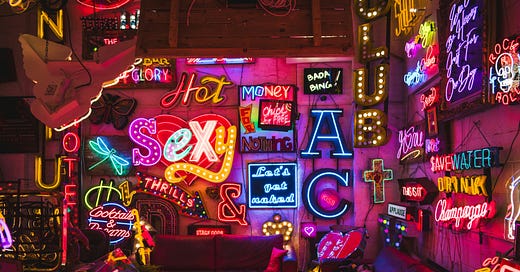Celebs, myths, and neon glory
Musician and podcaster Stephen Coates on London's Soho forever not being what it once was
There is an imagined London place that for over a hundred years has been called ’Soho’. You may have been there when you were younger, read about it in books, seen it in films and heard about it in songs. You can walk, drink, eat, play — even have sex — in Soho, the dense grid of streets south of Oxford Street, West of Charing Cross Road, north of Shaftesbury Avenue and East of Regent Street, but you probably won't find ‘Soho’ there.
’Soho’ haunts our nostalgia. It has always been lost, or at least disappearing, better than it is now. It is made of stories, myths and memories (many of them false), populated by the ghosts of characters who were more interesting, more artistic, bohemian, somehow more authentic than we are. A few of us got the chance to hang out with some of them for a bit before they really became ghosts. Buoyed by the privilege, we ignored or nervously giggled at their often boorish behaviour and excused their venalities so we could keep the myth alive.
That is not to say that the concrete reality of the place and its past denizens is not extraordinary. Every one of the 200 plus roads, courts and alleys that make up the Soho grid has a history, practically every building a fable. Collectively they have a genuinely astounding cultural and countercultural depth. Thinkers, artists, musicians, scientists, inventors, writers and freaks have lived and worked here: William Blake, Karl Marx, Mozart, John Logie Baird, Casanova, the engineer Sir Joseph Bazalgette, the artists Nina Hamnett and Augustus John, the pioneering nurse Mary Seacole, the singer and muse Betty May were just a few.
Keep reading with a 7-day free trial
Subscribe to Boundless Magazine to keep reading this post and get 7 days of free access to the full post archives.




